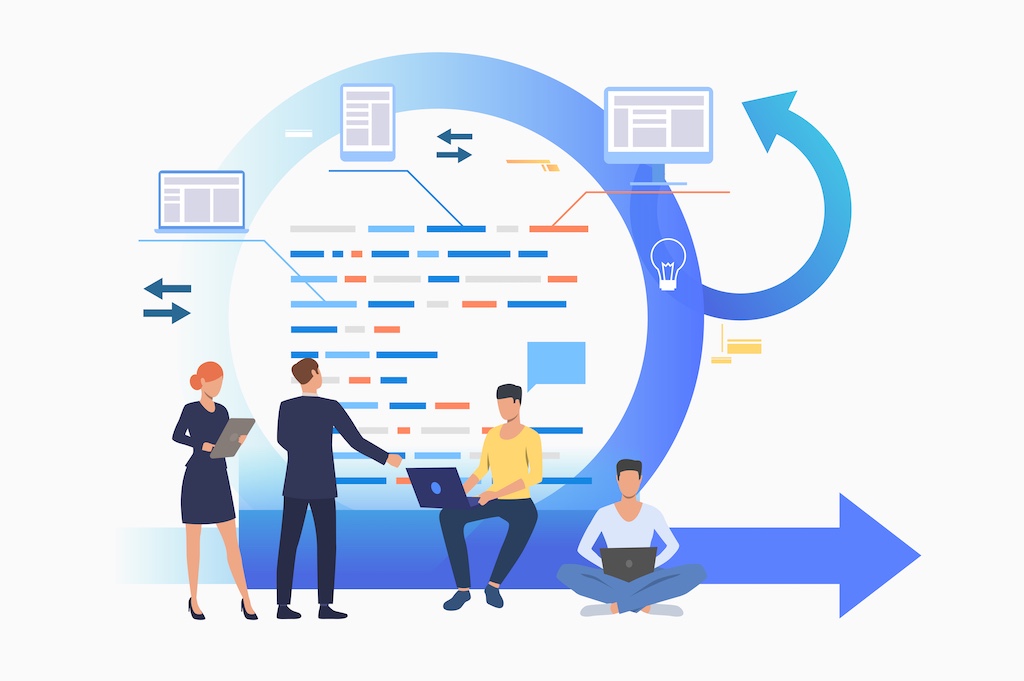DueDive, born from the software development firm Softwerk, specializes in IT due diligence assessments. We focus on five key technical indicators—technical value, technical debts, team competence, productivity/speed, and scalability—collectively known as the “Big 5.” But with the rise of Large Language Models (LLMs), the very foundations of how we benchmark software assets are shifting.
Case Context: Softwerk’s Delphi to C# Migration Challenge
Softwerk was commissioned to translate 6 million lines of legacy Delphi code into C#. With no cross-compilers available and manual rewriting as the only viable option, we initially estimated:
- Developer productivity: 250 LOC/day
- Working days/year: 220
- Total effort: 6 000 000 LOC / (250 LOC/day * 220 days/year) ≈ 109 person-years
A fully manual rewrite would have consumed over 110 person-years—clearly not a practical option.
The Role of LLMs in Code Transformation
Instead of relying solely on manual translation, Softwerk built an LLM-powered agent infrastructure to automate the transformation process.
A few months into the project, around 100 000 LOC had been successfully translated. Our quality checks showed that only 5% of this output required manual adjustments, and those adjustments were minor.
This radically changed our productivity assumptions. If just 5% of 6 million LOC requires manual work, that’s 300 000 lines. At an adjusted productivity of 500 LOC/day, the manual effort drops to:
300 000 LOC / (500 LOC/day * 220 days/year) ≈ 2.7 person-years
That’s a drop from over 100 person-years to just three (3)—a transformational gain for both Softwerk and its client.
Benchmarking Impact: Rethinking the Big 5 KPIs
This shift has real consequences for how DueDive benchmarks target companies.
Productivity and Speed
With automation, net developer productivity skyrockets. Traditional measures of lines per developer per month become outdated when LLMs handle the bulk of translation or refactoring.
Team Competence
Teams don’t need to be massive to be effective. The leverage from automation allows smaller teams to achieve what previously required entire departments.
Technical Value and Remediation Cost
Projects that once required a complete rewrite can now be modernized incrementally, and often automatically. This reduces technical debt and increases the maintainable value of legacy systems.
Strategic vs Technical Debt in a Post-LLM World
In the past, legacy code in outdated languages was often labeled strategic debt—deliberate but costly decisions to delay technical improvements in favor of business growth. See: When Does Tech Debt Become Strategic Debt?
Today, LLM automation shifts that classification.
What once justified a full rewrite now becomes manageable technical debt—something that can be incrementally addressed without derailing operations. This evolution reshapes how we estimate risk and remediation cost in due diligence.
Why This Matters for Investors and Buyers
For M&A teams, venture investors, or strategic buyers, the implications are big:
Technical due diligence is no longer about identifying blockers—it's about assessing how effectively automation can unblock them.
Remediation timelines are shrinking, affecting deal timelines and integration planning.
Strategic decisions about tech stacks can now be revisited, thanks to improved tooling.
Put simply, automation expands the realm of the fixable.
Conclusion: Benchmarking Needs a Rewrite
Large Language Models are not just a productivity booster—they’re reshaping the cost and feasibility landscape of technical due diligence. What was once seen as a 100-year engineering effort can now be tackled in months.
At DueDive, we’re already adjusting our benchmarking standards to reflect this shift. In the era of LLMs, what you can fix—and how fast—matters just as much as what’s broken.
